What is Pointing?
Pointing is the art of finishing the joints of brick or stone masonry. The outer surfaces of brick or stone masonry are sometimes treated by pointing instead of plastering. Plastering is more costly than pointing as it requires more cement mortar. But plastering is more protective than pointing. As I said before, pointing is an art through which you can make the exterior wall of your house weather-resistant as well as beautiful.

Types of Pointing
There are several types of pointing works. In this article, we are going to discuss 8 types of pointing works that are generally used in building construction.
1. Beaded pointing.
2. Flush Pointing.
3. Recessed Pointing.
4. Rubbed or Key or Grooved Pointing.
5. Tuck Pointing.
6. Struck Pointing.
7. Vee-shaped Pointing.
8. Weathered Pointing.
1. Beaded pointing
Beaded pointing is a type of pointing that gives a decorative look to the walls. But it is difficult to maintain, it may be damaged due to adverse effects of the environment. This type of pointing is created with the help of suitable tools. Mostly, steel or iron rods with a concave edge are used for creating such types of pointing.
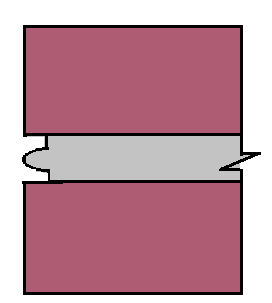
2. Flush Pointing
Flush pointing is a simple form of pointing. It is formed by removing excess mortar from the joint. In this pointing raked joints are filled up by mortar and finished flush with the face of the masonry. It is not good in appearance. But, it is more durable and is not easily affected by weather effects. Being simple, this pointing is extensively used.
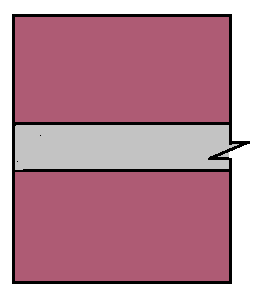
3. Recessed Pointing
It is another type of pointing that gives a beautiful look to the wall. In the case of the recessed pointing, the face of the pointing is pressed inside the wall around 5 mm. But the face of the pointing is kept verticle. This type of pointing is done by means of suitable tools. But it is easily affected by rainwater and holds the dust in its grooves.
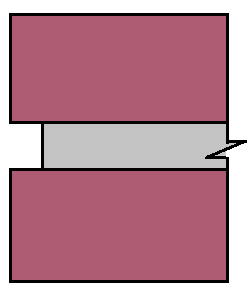
4. Rubbed or Key or Grooved Pointing
In this pointing, at first, all the joints are filled up flush with the face of the masonry, and then a semi-circular groove is formed by means of a suitable tool. The tools which are used for making such types of pointing is known as ‘pointer’ or ‘naila’. This type of pointing is very good in appearance and quite common in use.
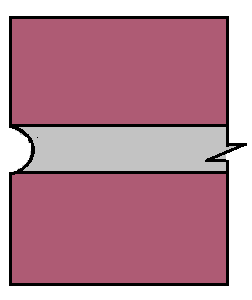
Read Also: 12 Different Types of Brick Cuts Used in Brick Masonry.
5. Tuck Pointing
Tuck pointing is another type of pointing. In this pointing, a groove having a width of 5 mm and a depth of 3 mm is formed at the center of the mortar joint. And, then this groove is filled with white lime putty (containing a small amount of silver sand) is slightly projecting outside the finished surface of the pointing. This pointing is good in appearance.
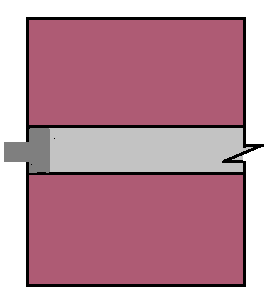
6. Struck Pointing
In this pointing, the surface of the pointing is kept inclined. The upper edge of the joint is pressed around 10 mm inside the masonry. This type of pointing is able to discharge rainwater effectively.
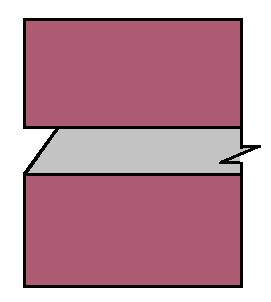
7. Vee-shaped Pointing
Vee-shaped pointing is a type of pointing that looks like the English alphabet ‘V’. In the case of Vee-shaped pointing, a Vee-shaped groove is made on the finished surface of the pointing by means of a suitable tool. But, this type of pointing is not able to effectively discharge rainwater and also holds dust in its groove.
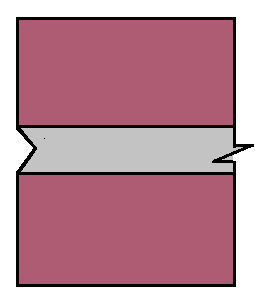
8. Weathered Pointing
It also looks like the English alphabet ‘V’. But, In this case, a vee-shaped projection is created instead of the groove in the finished surface of the pointing. This type of pointing is not affected by rainwater and other atmospheric agents. For this reason, they are called weathered pointing.
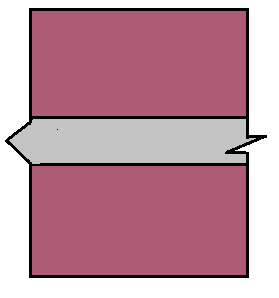
Read Also:
10 Types of Joints in Stone Masonry